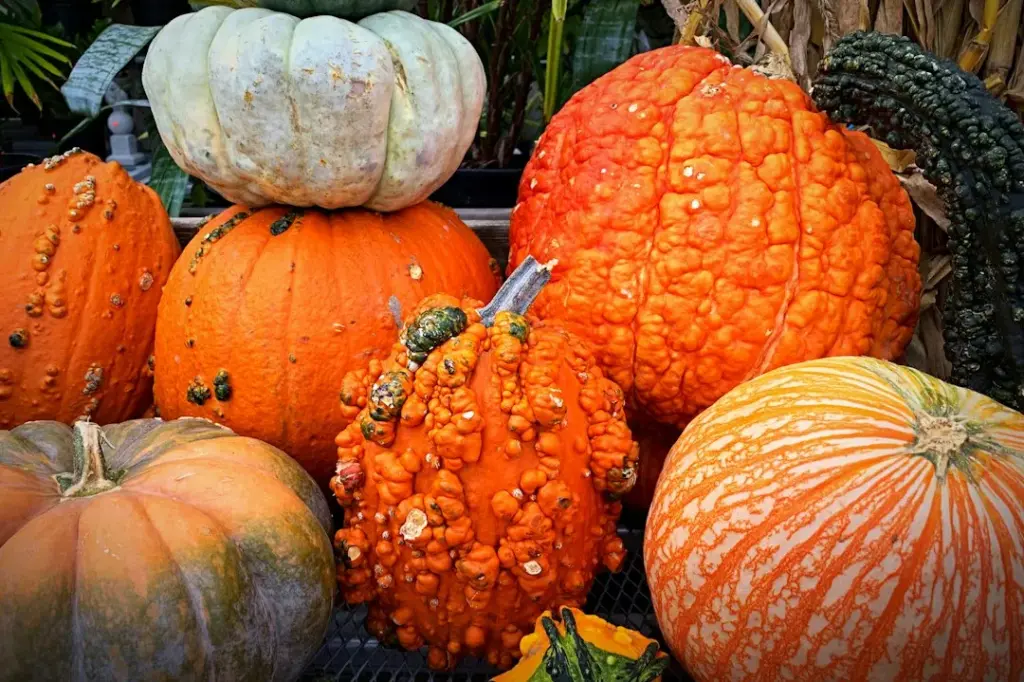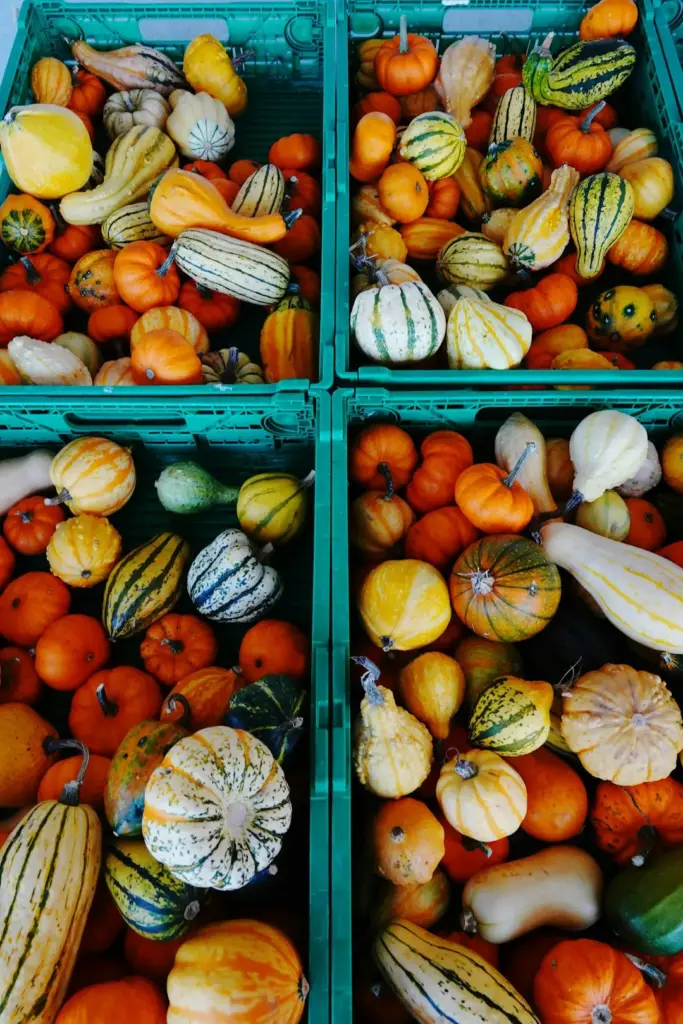Master the Art of Identifying Squash Varieties: A Beginner’s Guide
Squash varieties come in a wide array of shapes, sizes, and colors, making it a delightful challenge for beginners to identify them. Understanding the different types and physical characteristics of squash is crucial in mastering this skill. By learning how to identify squash varieties by color and shape, you can confidently choose the right squash for your recipes. In this beginner’s guide, we will explore the best practices for identifying squash varieties and highlight the common mistakes to avoid. Let’s delve into the fascinating world of squash and sharpen our skills in differentiating these versatile vegetables.
Introduction to Squash Varieties
Squash comes in a wide range of varieties, each with its own unique characteristics and flavors. Whether you’re an experienced gardener, a food enthusiast, or simply someone who appreciates a good meal, understanding the different squash types can enrich your culinary experiences. When it comes to identifying squash varieties, it’s essential to note that they belong to the gourd family and are known for their versatility in both savory and sweet dishes.
Understanding how to identify squash varieties can open up a world of culinary possibilities, allowing you to select the perfect type for a specific recipe. From the vibrant colors of summer squash to the hearty textures of winter squash, each variety brings something distinct to the table. As we delve into the specific types and characteristics of squash, you’ll gain the knowledge needed to confidently distinguish between them and make informed choices when selecting squash for your next meal.
By learning about the unique physical characteristics, colors, and shapes of different squash types, you’ll be better equipped to discern between them, elevating your cooking and dining experiences. Let’s explore how to identify squash varieties in more detail.
Intrigued to get started on learning how to identify squash varieties? Let’s dive in!

Different Types of Squash
When it comes to identifying squash varieties, it’s crucial to familiarize yourself with the different types available. Here’s a breakdown of some common squash varieties you’re likely to encounter:
- Zucchini (Cucurbita pepo): This type of squash is typically small and cylindrical with smooth, green skin. It’s known for its tender flesh and mild flavor, making it a versatile ingredient in various dishes.
- Butternut Squash (Cucurbita moschata): Characterized by its bell-like shape and pale, creamy color, butternut squash has a sweet, nutty flavor. It’s a popular choice for soups, roasting, and purees.
- Acorn Squash (Cucurbita pepo): Recognizable by its acorn-like shape and dark green skin, acorn squash offers a slightly sweet, nutty flavor. It’s often baked or roasted and pairs well with savory fillings.
- Spaghetti Squash (Cucurbita pepo): Named for its stringy, spaghetti-like flesh, this variety is yellow or light orange in color. Once cooked, the flesh can be separated into strands, resembling spaghetti, hence its name. It is a great low-carb alternative to pasta.
By understanding the key characteristics of each type, you’ll be better equipped to differentiate between squash varieties and choose the right one for your culinary endeavors. Keep reading to learn more about how to identify squash varieties to expand your knowledge and make informed decisions in the kitchen.
Physical Characteristics of Squash
When learning how to identify squash varieties, paying attention to their physical characteristics is essential. Here are some key features to look for when differentiating between squash types:
-
Skin Texture: The outer skin of squash can be smooth, bumpy, or even ridged. Take note of the texture as it varies among different varieties.
-
Color: Squash come in an array of colors such as green, yellow, orange, and even multi-color patterns. This can be a distinguishing factor in identifying the type of squash.
-
Size: Squash can range from small to large sizes, and this can greatly differ between varieties. Pay attention to the size as it can be a helpful clue.
-
Stem and Blossom End: Examine the stem and blossom end of the squash. The shape and color of these parts can vary between types of squash.
-
Flesh Color: When cut open, the color of the flesh can be a defining characteristic. Some may have orange, yellow, or even white flesh.
By familiarizing yourself with these physical attributes, you can develop a keen eye for discerning various squash varieties. Keep in mind that while these characteristics can be helpful, there may be exceptions, so it’s important to consider a combination of factors when identifying squash varieties.
Identifying Squash Varieties by Color
When it comes to identifying squash varieties, color can be a helpful indicator. Here are some tips on how to identify squash varieties by color:
-
Focus on the Primary Color: Observe the primary color of the squash. Different varieties may have distinct primary colors such as green, yellow, or orange.
-
Take Note of Patterns: Some squash varieties have patterns or markings on their skin. Look for stripes, speckles, or other patterns that can help distinguish one variety from another.
-
Consider Color Changes: Keep in mind that some squash change color as they ripen. For example, a green squash might turn orange as it matures. Understanding the ripening process can aid in accurate identification.
-
Use Color as a Clue for Taste: In addition to aiding identification, squash color can also be a clue for taste. Generally, darker orange squashes are sweeter, while lighter green or yellow squashes have a milder flavor.
By paying attention to the color of the squash, you can start to narrow down the possibilities and improve your ability to identify different squash varieties effectively.
Remember, while color can be a helpful clue, it’s essential to also consider other physical characteristics to accurately identify squash varieties.

Identifying Squash Varieties by Shape
When learning how to identify squash varieties, paying attention to the shape of the squash can provide valuable clues. Here’s a quick guide on how to do it effectively:
-
Observe the Shape: Different squash varieties exhibit unique shapes, ranging from round to elongated and from scalloped to pear-shaped. Take note of the overall form of the squash to help narrow down the options.
-
Refer to Visual Guides: Many gardening books, online resources, and seed catalogs offer visual references that showcase the typical shapes of various squash varieties. These can be incredibly helpful in matching the squash in your possession to a specific variety.
-
Use Comparisons: If you have multiple squash on hand, placing them side by side can make it easier to spot differences and similarities in shape. This comparative method can aid in distinguishing between varieties.
By utilizing these methods, you can confidently differentiate between different squash varieties based on their shapes, adding another skill to your arsenal for becoming proficient at identifying squash varieties.
Remember, while shape is an important indicator, it’s best to combine this method with other identification techniques for a more accurate assessment.
Best Practices for Identifying Squash Varieties
When you’re learning how to identify squash varieties, it’s essential to keep a few best practices in mind to ensure accurate recognition:
-
Familiarize Yourself with Common Varieties: Take the time to familiarize yourself with the most common squash varieties in your area. This can include familiarizing yourself with the physical characteristics, colors, and shapes of popular squash types.
-
Use Multiple Characteristics: Rather than relying solely on color or shape, utilize multiple characteristics for identification. For example, consider the texture of the skin, the presence of ridges, and the size of the squash in addition to color and shape.
-
Refer to Reliable Sources: Consult reliable sources such as gardening books, websites of agricultural extension offices, or reputable gardening forums to learn about different squash varieties and their distinctive features.
-
Take Note of Growth Patterns: Understanding the growth patterns of different squash varieties can also aid in accurate identification. Certain types may grow in a trailing manner, while others may be bush-like in their growth.
By following these best practices, you can enhance your ability to confidently identify various squash varieties, making your gardening or culinary ventures more enjoyable and successful.
Common Mistakes When Identifying Squash Varieties
When learning how to identify squash varieties, it’s important to be aware of common mistakes that beginners often make. Avoiding these pitfalls will ensure that you accurately differentiate between different types of squash.
Mistakes to Avoid:
-
Relying on Color Alone: One common mistake is solely relying on the color of the squash to identify it. While color can be a helpful indicator, it is not always definitive, as some varieties can come in a range of hues.
-
Ignoring Texture and Skin: Overlooking the texture and skin of the squash is a mistake. Pay attention to the thickness and smoothness of the skin, as well as any ridges or bumps, as these can be key identifiers.
-
Disregarding Shape and Size: Neglecting the shape and size of the squash can lead to misidentification. Different varieties can have distinct shapes, from round to elongated, and varying sizes, which are important factors to consider.
-
Failing to Consider Stem and Blossom End: Forgetting to examine the stem and blossom end of the squash is a mistake. These parts can provide valuable clues about the variety of squash you are dealing with.
By being mindful of these common mistakes, you can improve your skills in identifying squash varieties accurately and confidently.

Conclusion and Next Steps
As you have learned, identifying squash varieties can be a fun and rewarding experience for any gardener or cooking enthusiast. By understanding the various types of squash, their physical characteristics, colors, and shapes, you can confidently differentiate between different varieties.
To summarize, here are the key takeaways on how to identify squash varieties:
- Understanding Types: Familiarize yourself with different types of squash, including summer squash, winter squash, and gourds.
- Physical Characteristics: Take note of the rind texture, stem, and overall size to distinguish between varieties.
- Color and Shape: Pay attention to the color and shape, as they can vary greatly between different types of squash.
- Best Practices: Use a combination of physical features, color, and shape to accurately identify squash varieties.
- Avoid Common Mistakes: Be aware of common mistakes, such as misjudging maturity or confusing similar-looking varieties.
Moving forward, consider experimenting with various squash varieties in your recipes to appreciate their unique flavors and textures. Additionally, you may want to explore growing different types of squash in your own garden to experience the joy of cultivating diverse varieties.
With this newfound knowledge, you are well-equipped to confidently identify, cook, and enjoy different squash varieties. Happy cooking and gardening!
Frequently Asked Questions
How can I identify different squash varieties?
To identify different squash varieties, you can look at the shape, size, color, and texture of the squash. For example, butternut squash has a beige color, a long neck, and a bulbous end, while acorn squash is smaller and typically dark green with some orange markings. Additionally, you can also identify squash varieties based on their skin texture and the type of ridges or lines on the surface.
What are the common types of squash and how do they differ from each other?
Some common types of squash include zucchini, yellow squash, butternut squash, acorn squash, and spaghetti squash. These varieties differ in terms of shape, color, texture, and taste. For instance, zucchini and yellow squash are often similar in shape but differ in color, with zucchini being green and yellow squash, obviously, yellow. Butternut squash is known for its elongated shape and sweet flavor, while acorn and spaghetti squash have distinct ridges and unique textures.
Can I identify squash varieties based on their use in cooking?
Yes, you can identify squash varieties based on their use in cooking. For example, zucchini and yellow squash are commonly used in stir-fries, salads, and as a side dish. Butternut squash is often used in soups, stews, and casseroles due to its sweet and nutty flavor. Acorn squash is usually roasted or used in savory dishes, while spaghetti squash is popular for its stringy flesh, which resembles spaghetti, and is often used as a low-carb pasta alternative.
Are there any visual cues that can help me identify different squash varieties?
Yes, there are several visual cues that can help you identify different squash varieties. These cues include the color, shape, size, texture, and ridges of the squash. For example, the distinctive elongated shape and beige color of butternut squash, along with the pronounced ridges of acorn squash, can aid in their identification. Texture is also a key factor, as spaghetti squash has a unique stringy texture that sets it apart from other varieties.



